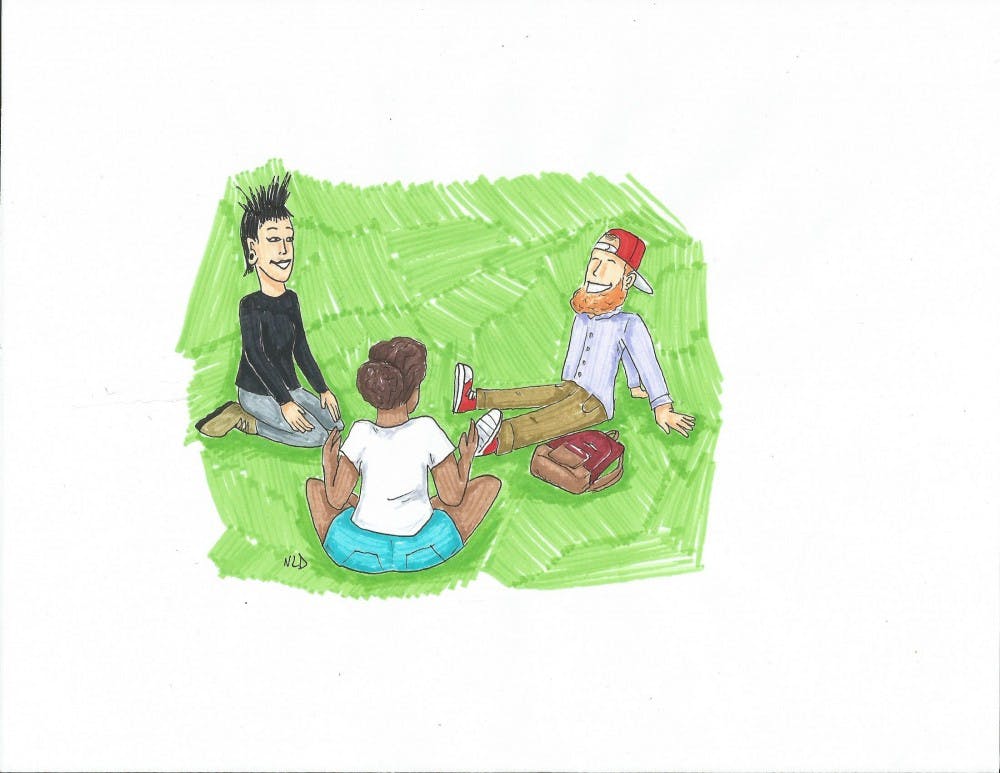Our generation has been accused of perpetuating a “Coddle Culture,” in which we impose strict limitations on people’s expression for the sake of others’ comfort or our own. Critics have cited the use — or the request — of trigger warnings as one example of our generation’s inability to address difficult, and sometimes upsetting, topics. Even The Atlantic wrote an article about the consequences of “coddling the American mind,” and argued that college students are demanding “protection from words and ideas they don’t like.”
Other critics say political correctness and requests for trigger warnings stunt individual growth and stifle important dialogue. They also accuse these requests for trigger warnings on syllabi or before specific classroom discussions as favoring feelings above facts.
While the use of trigger warnings and the emphasis on political correctness are not inherently the same issue, they stem from the same desire: to be thoughtful of varying experiences, and to be compassionate toward others.
Unlike some critics’ definitions, “political correctness” doesn’t mean that certain topics are “off-limits” or that talking about controversial topics must always be done in a sterile, unemotional way. In fact, it’s the opposite. To be politically correct is to continue to have the really difficult conversations, but to do so with openness and compassion, with flexibility of thought and an understanding that everyone’s experiences are different. Being politically correct is listening to someone’s point of view, allowing them to express when something makes them upset/uncomfortable, understanding why it was upsetting and trying to speak and behave accordingly.
A desire to be politically correct is not a desire to censor people’s thoughts. In fact, it’s a desire to ensure that everyone’s thoughts can be expressed in the most effective way possible.
If someone is offended by the way you speak or behave, they’re less likely to listen to what you have to say. Have you ever had a professor that yells a lot? Or a classmate that complains too much? After a while, we begin to shut those voices out. We stop paying attention because that method of communicating no longer is effective.
The same is true for political correctness: Using derogatory names or slurs is not an effective way of communicating. Your thoughts and feelings are valid, but communicating them effectively, without causing undue offense, increases your odds of being heard tremendously.
The use of trigger warnings can be applied to this same line of thinking. Requesting that a professor give his or her students warning before showing and discussing potentially upsetting class materials is not an attempt to stifle discussion or protect students from difficult conversations. Trigger warnings are, again, an attempt to create a safe space for effective communication. If students aren’t prepared to talk about upsetting material, they’ll most likely tune out and be poorer participants in classroom discussion — which could be detrimental to everyone’s educational experience.
The use of trigger warnings can actually be used as an entry point into important class discussions, because professors can discuss why it's still important to learn about and discuss those potentially upsetting topics. Allowing people to ease into difficult conversations is not “coddling” them. It’s treating them with compassion and respect.
The request for trigger warnings, like the request for political correctness, is not some quasi-totalitarian agenda attempting to squash all forms of individual expression. It’s not an attempt to infringe on free speech. It’s an attempt to open speech, so that everyone can participate without being marginalized (or even re-traumatized) by the words and images people choose to use to make their point.
We want professors and students to consider the importance of safe spaces for open (if sometimes controversial) dialogue and the role they play in either creating, maintaining or destroying those safe spaces with their language and behavior.
Being an effective communicator doesn’t mean unapologetically relaying the “facts,” or voicing our opinion. Being an effective communicator means approaching every conversation, every interaction, with humility and compassion and an understanding that all dialogue should be made in the pursuit of shared understanding, not in division or ostracization.









